Synopsis
The book starts with a description of the vinegar tasters, which is a painting portraying the three great eastern thinkers, Confucius, the Buddha, and Laozi over a vat of vinegar. Each tasting the vinegar of "life," Confucius finds it sour, the Buddha finds it bitter, but Laozi, the traditional founder of Taoism, finds it satisfying. Then the story unfolds backing up this analogy.
Hoff presents Winnie-the-Pooh and related others from A. A. Milne's stories as characters that interact with him while he writes The Tao of Pooh, but also quotes excerpts of their tales from Milne's actual books Winnie-the-Pooh and The House at Pooh Corner, in order to exemplify his points to the reader and the characters. Hoff uses many of Milne's characters to symbolize ideas that differ from or accentuate Taoist tenets. Winnie-the-Pooh himself, for example, personifies the principles of wu wei , the Taoist concept of "effortless doing," and pu, the concept of being open to, but unburdened by, experience, and it is also a metaphor for natural human nature. In contrast, characters like Owl and Rabbit over-complicate problems, often over-thinking to the point of confusion, and Eeyore pessimistically complains and frets about existence, unable to just be. Hoff regards Pooh's simpleminded nature, unsophisticated worldview and instinctive problem-solving methods as conveniently representative of the Taoist philosophical foundation. The book also incorporates translated excerpts from various prominent Taoist texts, from authors such as Laozi and Zhuang Zhou. However, one poem included in the book attributed to Lu Yu of the Tang Dynasty was actually written by Song Dynasty poet Lu You.

Alan Alexander Milne was an English writer best known for his books about the teddy bear Winnie-the-Pooh, as well as for children's poetry. Milne was primarily a playwright before the huge success of Winnie-the-Pooh overshadowed all his previous work. Milne served in both World Wars, as a lieutenant in the Royal Warwickshire Regiment in the First World War and as a captain in the Home Guard in the Second World War.

The Tao Te Ching is a Chinese classic text written around 400 BC and traditionally credited to the sage Laozi, though the text's authorship, date of composition and date of compilation are debated. The oldest excavated portion dates back to the late 4th century BC, but modern scholarship dates other parts of the text as having been written—or at least compiled—later than the earliest portions of the Zhuangzi.
Tao or Dao (道) is the natural order of the universe, whose character one's intuition must discern to realize the potential for individual wisdom, as conceived in the context of East Asian philosophy, East Asian religions, or any other philosophy or religion that aligns to this principle. This intuitive knowing of life cannot be grasped as a concept. Rather, it is known through actual living experience of one's everyday being. Its name, Tao or Dao(Chinese ), came from Chinese, where it signifies the way, path, route, road, or sometimes more loosely doctrine, principle, or holistic belief.

Laozi, also romanized as Lao Tzu and various other ways, was a semi-legendary ancient Chinese Taoist philosopher, credited with writing the Tao Te Ching. Laozi is a Chinese honorific, generally translated as "the Old Master". Traditional accounts say he was born as Li Er in the state of Chu in the 6th century BC during China's Spring and Autumn Period, served as the royal archivist for the Zhou court at Wangcheng, met and impressed Confucius on one occasion, and composed the Tao Te Ching in a single session before retiring into the western wilderness.
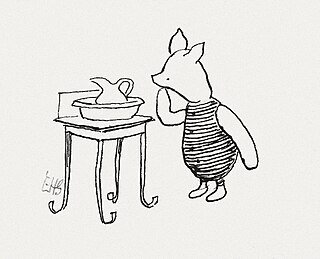
Piglet is a fictional character from A. A. Milne's Winnie-the-Pooh books. Piglet is Winnie‑the‑Pooh's closest friend amongst all the toys and animals featured in the stories. Although he is a "Very Small Animal" of a generally timid disposition, he tries to be brave and on occasion conquers his fears.

Winnie-the-Pooh is a 1926 children's book by English author A. A. Milne and English illustrator E. H. Shepard. The book is set in the fictional Hundred Acre Wood, with a collection of short stories following the adventures of an anthropomorphic teddy bear, Winnie-the-Pooh, and his friends Christopher Robin, Piglet, Eeyore, Owl, Rabbit, Kanga, and Roo. It is the first of two story collections by Milne about Winnie-the-Pooh, the second being The House at Pooh Corner (1928). Milne and Shepard collaborated previously for English humour magazine Punch, and in 1924 created When We Were Very Young, a poetry collection. Among the characters in the poetry book was a teddy bear Shepard modelled after his son's toy. Following this, Shepard encouraged Milne to write about his son Christopher Robin Milne's toys, and so they became the inspiration for the characters in Winnie-the-Pooh.

The Three Pure Ones, also translated as the Three Pure Pellucid Ones, the Three Pristine Ones, the Three Divine Teachers, the Three Clarities, or the Three Purities, are the three highest gods in the Taoist pantheon. They are regarded as pure manifestation of the Tao and the origin of all sentient beings, along with the "lords of the Three Life Principles or 'Breaths' (qi)".
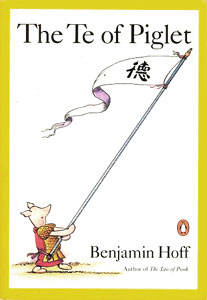
The Te of Piglet is a 1992 philosophical book written by Benjamin Hoff as a companion to his 1982 work The Tao of Pooh. The book was published by Dutton Books and spent 21 weeks on the Publishers Weekly Bestseller List and 37 weeks on the New York Times Bestseller List.
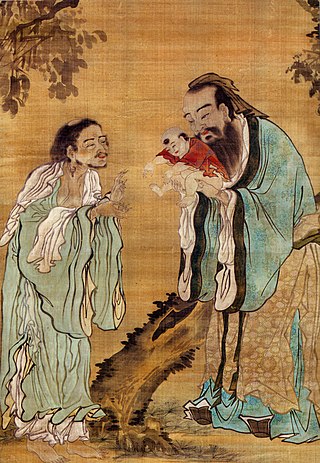
In Chinese philosophy, the three teachings are Confucianism, Taoism, and Chinese Buddhism considered as a harmonious aggregate. Literary references to the "three teachings" by prominent Chinese scholars date back to the 6th century. The term may also refer to a non-religious philosophy built on that aggregation.
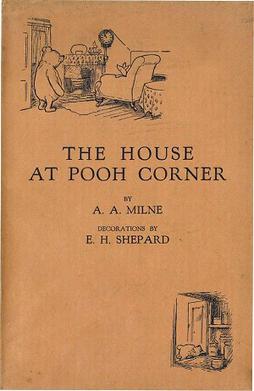
The House at Pooh Corner is a 1928 children's book by A. A. Milne and illustrated by E. H. Shepard. This book is the second novel, and final one by Milne, to feature Winnie-the-Pooh and his world. The book is also notable for introducing the character, Tigger. The book's exact date of publication is unknown beyond the year 1928, but it was likely towards the end of the year as book reviews for the book began appearing during October 1928.
Benjamin Hoff is an American author. He is best known as the author of The Tao of Pooh (1982) and The Te of Piglet (1992). In 2006, he denounced the publishing industry and announced his resignation from book-writing. His book, The Singing Creek Where the Willows Grow, won the American Book Award in 1988.
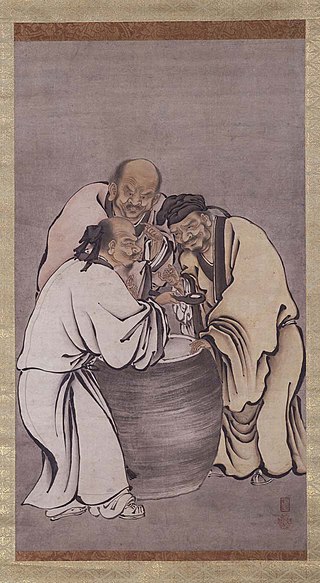
The Vinegar Tasters is a traditional subject in Chinese painting, and later spread to other East Asian countries. The allegorical composition depicts the three founders of China's major religious and philosophical traditions: Confucianism, Buddhism, and Taoism.

Winnie the Pooh is a fictional bear created by English author A. A. Milne and English artist and book illustrator E. H. Shepard that is one of the most popular characters adapted for film and television by The Walt Disney Company. Disney first received certain licensing rights to the Winnie-the-Pooh stories, characters, and trademarks from Stephen Slesinger, Inc. and the estate of A. A. Milne in 1961.
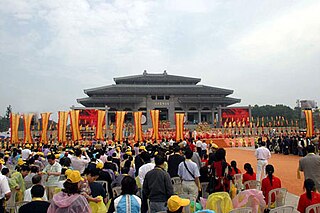
In the study of comparative religion, the East Asian religions or Taoic religions, form a subset of the Eastern religions. This group includes Chinese religion overall, which further includes Ancestral Worship, Chinese folk religion, Confucianism, Taoism and popular salvationist organisations, as well as elements drawn from Mahayana Buddhism that form the core of Chinese and East Asian Buddhism at large. The group also includes Japanese Shinto, Tenrikyo, and Korean Muism, all of which combine Shamanistic elements and indigenous ancestral worship with various influences from Chinese religions. Chinese salvationist religions have influenced the rise of Japanese new religions such Tenriism and Korean Jeungsanism; as these new religious movements draw upon indigenous traditions but are heavily influenced by Chinese philosophy and theology.

The Northern Celestial Masters are an evolution of the Daoist Way of the Celestial Master in the north of China during the Southern and Northern Dynasties. The Northern Celestial Masters were a continuation of the Way as it had been practiced in Sichuan province by Zhang Lu and his followers. After the community was forced to relocate in 215 CE, a group of Celestial Masters established themselves in Northern China. Kou Qianzhi, from a family who followed the Celestial Master, brought a new version of Celestial Master Daoism to the Northern Wei. The Northern Wei government embraced his form of Daoism and established it as the state religion, thereby creating a new Daoist theocracy that lasted until 450 CE. The arrival of Buddhism had great influence on the Northern Celestial Masters, bringing monasticism and influencing the diet of practitioners. Art produced in areas dominated by the Northern Celestial Masters also began to show Buddhist influence. When the theocracy collapsed, many Daoists fled to Louguan, which quickly became an important religious center. The Northern Celestial Masters survived as a distinct school at Louguan until the late 7th century CE, when they became integrated into the wider Daoist movement.
The history ofTaoism stretches throughout Chinese history. Originating in prehistoric China, it has exerted a powerful influence over Chinese culture throughout the ages. Taoism evolved in response to changing times, with its doctrine and associated practices being revised and refined. The acceptance of Taoism by the ruling class has waxed and waned, alternately enjoying periods of favor and rejection. Most recently, Taoism has emerged from a period of suppression and is undergoing a revival in China.

Pooh and the Philosophers is a 1995 book by John Tyerman Williams, purporting to show how all of Western philosophy from the last 3,000 years was a long preparation for Winnie the Pooh. It was published in 1995 by Dutton in the United States and by Methuen in the United Kingdom, using A. A. Milne's fictional bear Winnie-the-Pooh, and is intended to be both humorous and intellectual.

Winnie-the-Pooh is a fictional anthropomorphic teddy bear created by English author A. A. Milne and English illustrator E. H. Shepard. Winnie-the-Pooh first appeared by name in a children's story commissioned by London's Evening News for Christmas Eve 1925. The character is based on a stuffed toy that Milne had bought for his son Christopher Robin in Harrods department store.
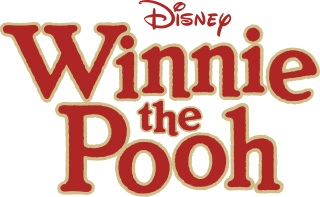
Winnie the Pooh is a media franchise produced by The Walt Disney Company, based on A. A. Milne and E. H. Shepard's stories featuring Winnie-the-Pooh. It started in 1966 with the theatrical release of the short Winnie the Pooh and the Honey Tree.
Taoist Art relates to the Taoist philosophy and narratives of Lao-tzu that promote "living simply and honestly and in harmony with nature."

















